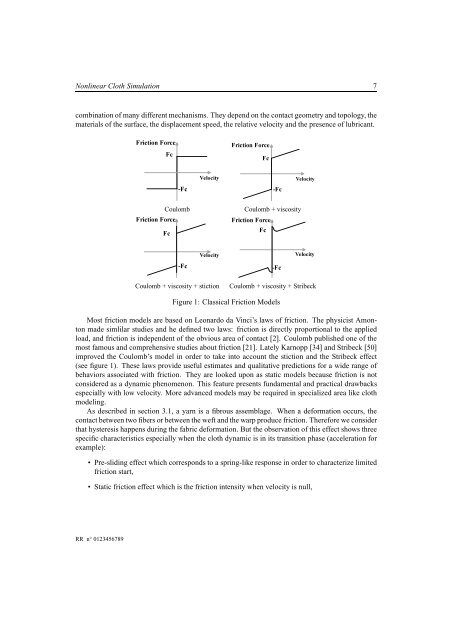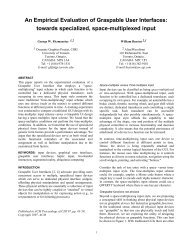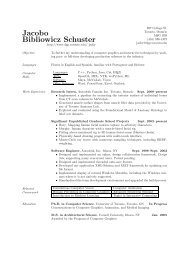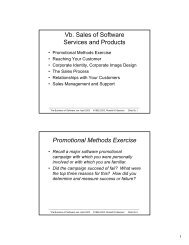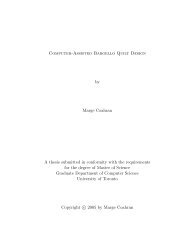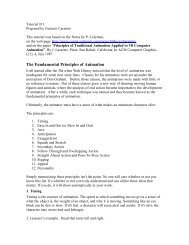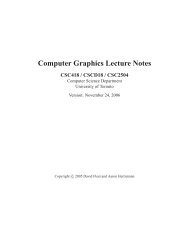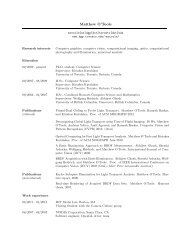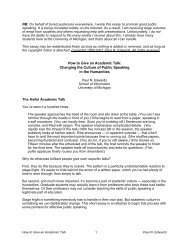Nonlinear Cloth Simulation - dgp
Nonlinear Cloth Simulation - dgp
Nonlinear Cloth Simulation - dgp
You also want an ePaper? Increase the reach of your titles
YUMPU automatically turns print PDFs into web optimized ePapers that Google loves.
<strong>Nonlinear</strong> <strong>Cloth</strong> <strong>Simulation</strong> 7<br />
combination of many different mechanisms. They depend on the contact geometry and topology, the<br />
materials of the surface, the displacement speed, the relative velocity and the presence of lubricant.<br />
Friction Force<br />
Fc<br />
Friction Force<br />
-Fc<br />
Velocity<br />
Friction Force<br />
Fc<br />
-Fc<br />
Coulomb Coulomb + viscosity<br />
Fc<br />
-Fc<br />
Velocity<br />
Friction Force<br />
Fc<br />
-Fc<br />
Velocity<br />
Velocity<br />
Coulomb + viscosity + stiction Coulomb + viscosity + Stribeck<br />
Figure 1: Classical Friction Models<br />
Most friction models are based on Leonardo da Vinci’s laws of friction. The physicist Amonton<br />
made simlilar studies and he defined two laws: friction is directly proportional to the applied<br />
load, and friction is independent of the obvious area of contact [2]. Coulomb published one of the<br />
most famous and comprehensive studies about friction [21]. Lately Karnopp [34] and Stribeck [50]<br />
improved the Coulomb’s model in order to take into account the stiction and the Stribeck effect<br />
(see figure 1). These laws provide useful estimates and qualitative predictions for a wide range of<br />
behaviors associated with friction. They are looked upon as static models because friction is not<br />
considered as a dynamic phenomenon. This feature presents fundamental and practical drawbacks<br />
especially with low velocity. More advanced models may be required in specialized area like cloth<br />
modeling.<br />
As described in section 3.1, a yarn is a fibrous assemblage. When a deformation occurs, the<br />
contact between two fibers or between the weft and the warp produce friction. Therefore we consider<br />
that hysteresis happens during the fabric deformation. But the observation of this effect shows three<br />
specific characteristics especially when the cloth dynamic is in its transition phase (acceleration for<br />
example):<br />
• Pre-sliding effect which corresponds to a spring-like response in order to characterize limited<br />
friction start,<br />
• Static friction effect which is the friction intensity when velocity is null,<br />
RR n° 0123456789


